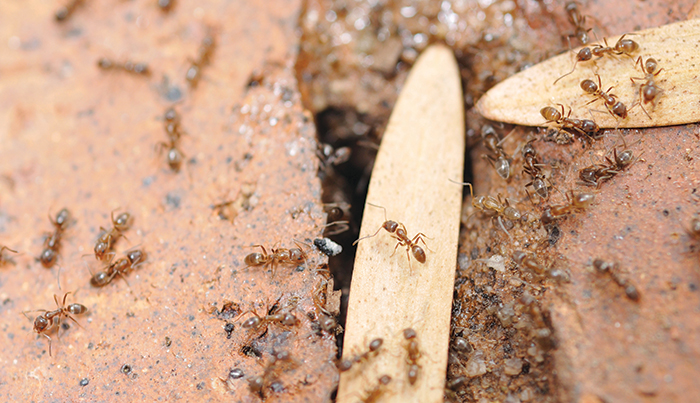A Purdue University entomologist tested the use of poison-coated termites to control colonies of invasive ants in South Africa.
Grzegorz Buczkowski, a research associate professor in the Department of Entomology, coated termites with poison and set them free near Argentine ant colonies. Over three weeks, nearly every ant was killed, Purdue says.
“All ants eat protein to grow, and they usually get it by preying on insects,” says Buczkowski, whose findings were published in the Journal of Applied Entomology. “We are feeding them what they want and getting better results.”
In field tests in South Africa, Buczkowski created six 100-square-meter plots and released termites coated in fipronil. In four plots, 100 percent of ants were eradicated within 21 days, according to Purdue. In the other two, nearly 98 percent of the ants were killed.
“Argentine ants are highly aggressive and competitive. It’s why they can outcompete native ants,” Buczkowski says. “But that works against them. When you put out termites, Argentine ants are the first to find them. They take these termites back to the nest and poison the whole colony.”
While the termites die within an hour of being painted with fipronil, Buczkowski sees the method as an effective way to control invasive ant populations in large natural areas that contain colonies with millions of ants — not near homes.
Future research will include testing other poisons, as well as different bait insects and other species of invasive ants, Pudue says. Since ants tend to want fresh prey, Buczkowski is experimenting with freeze-dried termites that look fresh but could be pre-treated and taken to field areas to kill ants.
Purdue University’s Center for Urban and Industrial Pest Management and the Industrial Affiliates Program funded the research.

Leave A Comment